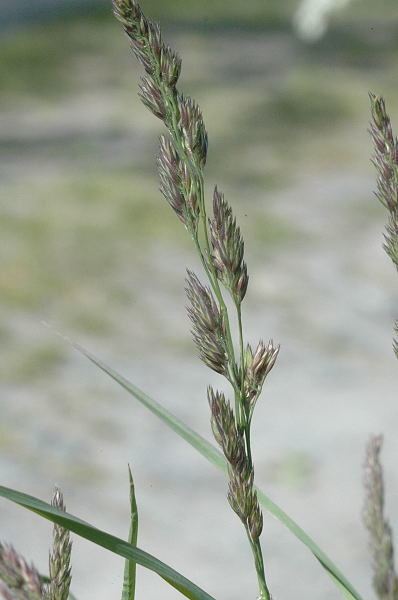Scientific name Dactylis Rank Genus | Higher classification Grasses | |
 | ||
Similar Dactylis glomerata, Grasses, Fescues, Ryegrass, Bromus | ||
Dactylis glomerata
Dactylis is a genus of Eurasian and North African plants in the bluegrass subfamily within the grass family. They are known in English as cock's-foot or cocksfoot grasses, also sometimes as orchard grasses.
Contents

Dactylis garden plants
Taxonomy

The genus has been treated as containing only a single species D. glomerata by many authors, treating variation in the genus at only subspecific rank within Dactylis glomerata, but more recently, there has been a trend to accept two species, while some authors accept even more species in the genus, particularly island endemic species in Macaronesia.
Description

Dactylis species are perennial grasses, forming dense tussocks growing to 15–140 centimetres tall, with leaves 20–50 cm long and up to 1.5 cm broad, and distinctive tufted triangular flowerheads comprising a panicle 10–15 cm long, turning pale grey-brown at seed maturity. The spikelets are 5–9 mm long, typically containing two to five flowers. The stems have a flattened base, which distinguishes them from many other grasses.

- Dactylis glomerata L. - Eurasia and North Africa; naturalized in southern Africa, Australia, the Americas, and various oceanic islands
- Dactylis smithii Link - Canary Islands, Cape Verde, Madeira
Many species now considered better suited to other genera: Aeluropus Ammochloa Cutandia Desmostachya Dinebra Elytrophorus Eragrostis Festuca Koeleria Odyssea Poa Rostraria Schismus Spartina Tribolium Trisetaria Wangenheimia
Cytology
The taxa show several different levels of polyploidy. Dactylis glomerata subsp. glomerata and D. glomerata subsp. hispanica are tetraploid forms with 28 chromosomes. Several of the other taxa, including D. glomerata. subsp. himalayensis (syn. D. himalayensis), D. glomerata subsp. lobata (syn. D. polygama), D. metlesicsii, and some forms of D. smithii, are diploid with 2n = 14; hexaploids with 42 chromosomes also occur rarely.
